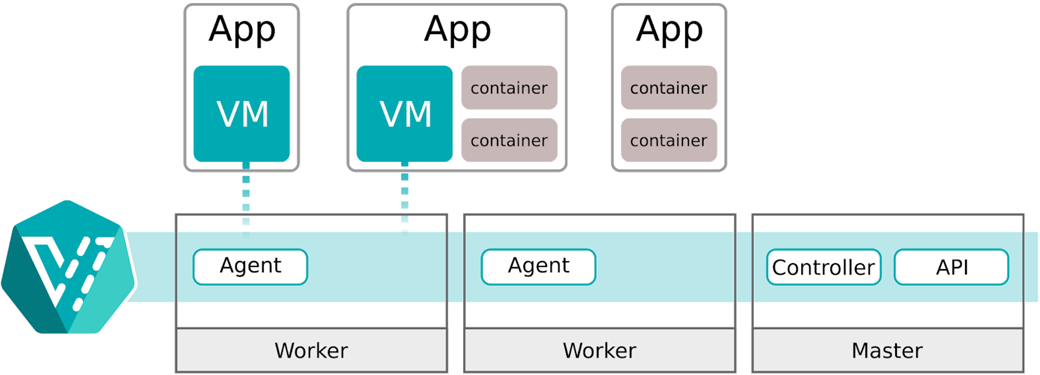Cloud native and Kubernetes are two of the hottest buzz words in the IT industry today. However, the sparkle of these terms cannot cover the legacy tangle of tech hiding at the back of every enterprise datacenter or even cloud infrastructures. Greenfield deployments of containers can easily take advantage of these advances, but integrating into legacy systems can be much more difficult. Without the ability to containerize existing applications, some IT departments feel they will never be able to tackle the modernization of their stack. For various technological or security reasons, some applications may just not be suited to move from a virtual machine to a container. Faced with this reality, companies are forced to maintain two different stacks, one for legacy applications running on virtual machines and one for greenfield deployments in containers. This approach is unsustainable for many companies who have enough challenges maintaining one stack let alone two.
KubeVirt to the Rescue
Cloud native infrastructure shouldn’t be seen as out of reach, but rather an enabler for IT modernization, like running virtual machines side by side with containers. The key is understanding which technologies help facilitate the desired state. KubeVirt is a very powerful and proven open source project that can help integrate legacy and greenfield systems and yields considerable advantages for development teams, operations, and companies as a whole.
KubeVirt technology addresses the needs of development teams that have adopted or want to adopt Kubernetes but possess existing virtual machine-based workloads that cannot be easily containerized. More specifically, the technology provides a unified development platform where developers can build, modify, and deploy applications residing in both application containers as well as virtual machines in a common, shared environment.

At the same time, by running virtual machines and containers the same way, operators are able to massively reduce the complexity of their stack. Instead of having to run two separate infrastructures, they can run every application on one modern platform without the need to rewrite all of them first. The legacy and greenfield applications benefit from being able to use the same monitoring and logging stack across them and building integrations once but deploying them everywhere. Moreover, connecting virtualized and containerized workloads is also simplified. Beyond that, policy and governance concepts can be centralized to one stack rather than having to maintain multiple ones. Finally, virtual machines running in containers benefit from the ability to self heal and live migrate workloads, reducing operational toil.
At the company level, the benefits of KubeVirt become even more apparent. Being able to run virtual machines and containers on the same infrastructure allows companies to modernize in motion. This means migrating existing workloads onto modern infrastructure, deploying greenfield applications today, and serving as a crucial bridge between them. Developer velocity is increased to deploy features faster and operational processes are simplified to reduce costs. Cloud native infrastructure isn’t a future paradigm, KubeVirt makes it an enabler today to get to tomorrow.
KubeVirt on Kubermatic Kubernetes Platform
At Kubermatic, we realized the benefits KubeVirt could bring to our customers and decided to integrate it into our Kubermatic Kubernetes Platform. With Kubermatic Virtualization powered by KubeVirt, our customers have the easiest way to manage their complete infrastructure stack. They can automate the operations of Kubernetes clusters, virtual machines, and the containers running on them leveraging 100% open source software. We are even bringing KubeVirt to edge computing allowing our customers to run virtual machines on the edge for free. To see the benefits of KubeVirt or Kubermatic, you can check them out on GitHub or request a demo today.





